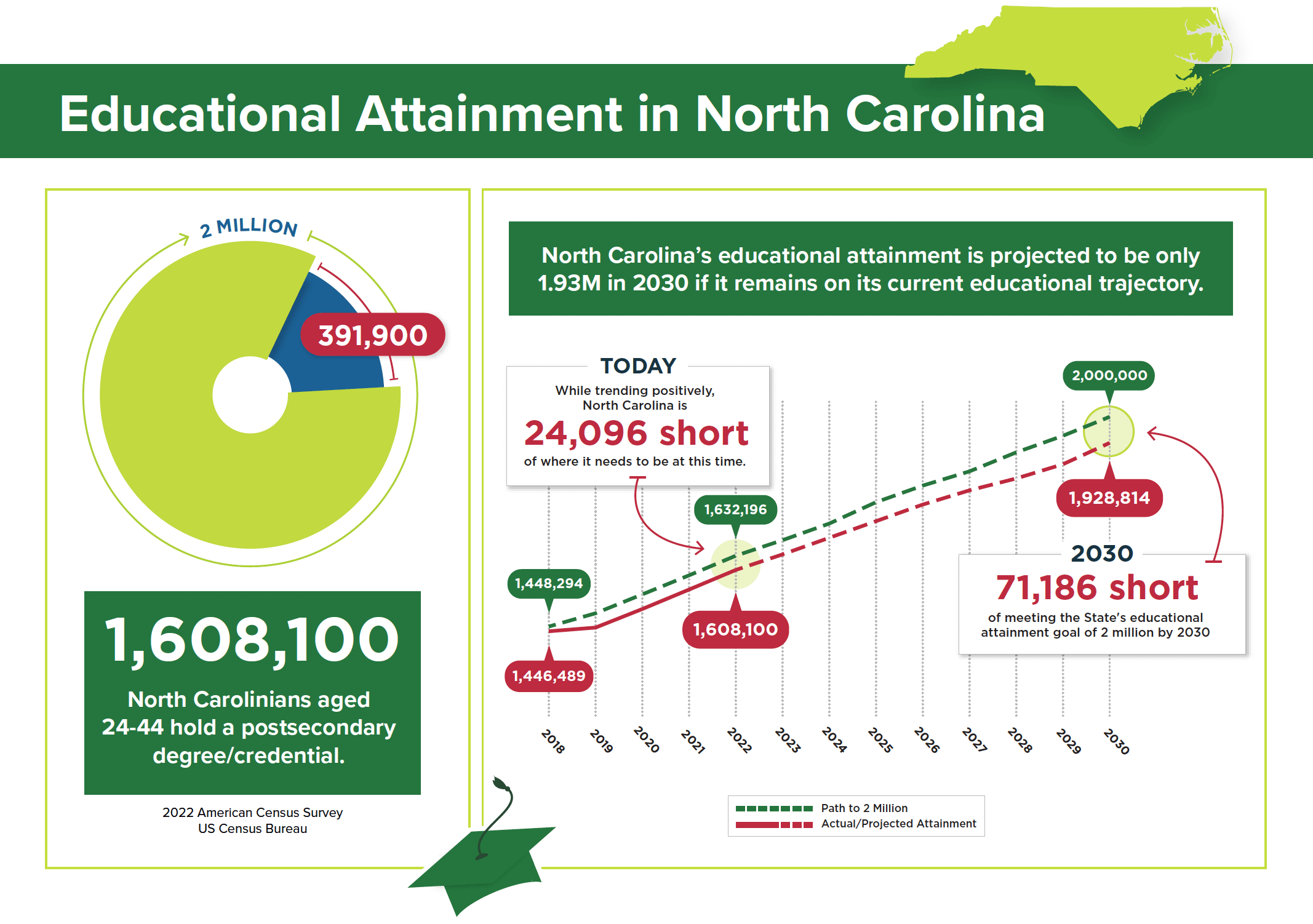SANFORD (February 15, 2024) – North Carolina is growing its educated workforce – but not quickly enough to meet the ambitious goal it set for 2030.
In 2019, the governor and General Assembly adopted the goal of myFutureNC for the state to have 2 million North Carolinians ages 25-44 with a degree or high-quality credential by 2030.
As the nonprofit organization released its latest report today on the state of education attainment in North Carolina, President and CEO Cecilia Holden noted that for every 100 9th-graders in the state’s public schools, only 30 will get a degree or credential within six years of graduating from high school.
“Yet we know 2/3 of our jobs will require higher levels of education,” Holden said.
“Whatever our employers’ requirements, we want to see skilled North Carolinians filling North Carolina jobs,” she said.
The state has produced 4% more degree or credential holders in the past three years, Holden said.
But it is still 391,900 short of the 2 million target – or 24,000 short of where it should be at this point to reach that goal. If the state doesn’t do anything differently, it will fall 71,000 short of the goal in 2030, she said. Graphic courtesy of myFutureNC
Graphic courtesy of myFutureNC
The report makes a number of findings:
- While North Carolina students are recovering from the COVID pandemic, they are still below pre-pandemic levels in reading and math.
- Only 51% of eligible 4-year-olds from low-income families were enrolled in NC Pre-K in 2021-22; myFutureNC wants to see 75% of eligible 4-year-olds in every county enrolled in NC Pre-K. A Duke University study found the program significantly increases both reading and math proficiency, and the benefits last at least through 8th
- High-school graduation rates improved from 83% in 2013 to 87% in 2023 – but that means 13% of 9th-graders never finish high school.
- Chronic absenteeism remains a very real problem. In 2021-22, at least 31% of North Carolina public school students missed at least 10% of the school year, which makes it more likely those students will drop out.
- In 2021, 43% of North Carolinians ages 35-44 did not make a family-sustaining wage.
MyFutureNC recommends a variety of measures it intends to pursue to help improve completion rates. Among them:
- FAFSA Completion: The Free Application for Federal Student Aid, or FAFSA, provides students with access to federal Pell Grants and state need-based grants. Research has found 88% of high-school seniors who complete the application attend college. “Completing the FAFSA is the single most important step in accessing financial aid,” Holden said. The state saw a 5.5% increase in FAFSA completion last year.
- Next NC Scholarships: A North Carolina high-school graduate from a household with an income up to $80,000 can qualify for at least $3,000 to attend community college, covering all tuition and fees. Students attending a public university in the state will receive a minimum of $5,000, which pays for more than half, if not all, tuition and fees. Students need only complete the FAFSA to apply.
- NC Reconnect: This effort tries to recruit adult learners who left college without a degree back to the classroom. To date, 15 community colleges have re-enrolled 2,035 students.
As legislators return to Raleigh in April, myFutureNC makes three policy recommendations:
- Increase emergency assistance funds to help students persist to completion of their college degree.
- Provide more financial aid through NC Workforce Credentials to provide financial aid for students seeking industry credentials. Currently, federal and state aid can’t be used for non-degree credentials.
- Provide funds for local and regional collaboratives to pursue strategies to increase attainment.

Leave a Reply